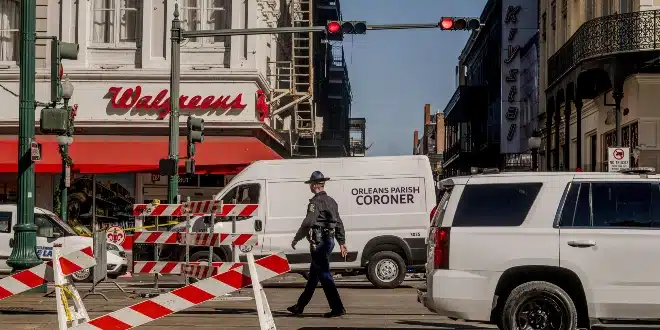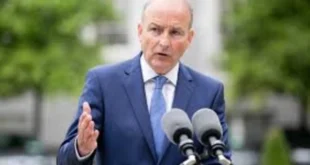Terror Attack in New Orleans: A Tragic New Year’s Incident
In a horrifying incident, a US citizen, Shamsud-Din Jabbar, drove a pick-up truck into a crowd of New Year revelers in New Orleans, resulting in the deaths of at least 15 people and injuring dozens more. The FBI identified the attacker as a 42-year-old army veteran from Texas, who had previously worked as a real estate agent in Houston and served as an IT specialist in the military.
Investigation and Manhunt
Authorities are actively searching for potential accomplices, though details remain scarce. Police Superintendent Anne Kirkpatrick labeled Jabbar a terrorist, and the FBI found an ISIS flag in his vehicle. The agency is investigating his connections to terrorist organizations. Louisiana Governor Jeff Landry and FBI agent Alethea Duncan emphasized that Jabbar might not have acted alone, suggesting a broader threat.
Incident Details
The attack occurred around 3:15 am in the French Quarter, a popular area filled with people celebrating the start of 2025. Jabbar drove a white Ford F-150 electric pickup into a crowd, then exited the vehicle and engaged in a gunfight with police, resulting in his death and wounding two officers. The FBI later neutralized two homemade bombs found at the scene.
Motive and Background
Superintendent Kirkpatrick stated that Jabbar was intent on causing maximum destruction, driving at high speed with clear intent. The Pentagon revealed that Jabbar served in the army from 2007 to 2015, including a deployment to Afghanistan, and continued in the army reserve until 2020. President Joe Biden condemned the attack, affirming that such violence would not be tolerated, and mentioned that Jabbar had posted videos inspired by ISIS shortly before the attack.
Political Reactions
President-elect Donald Trump prematurely linked the attack to illegal immigration, despite Jabbar being an American citizen. Trump also claimed a rise in the national crime rate, contradicting FBI statistics showing a decline in violent crime.
Witness Accounts and City Impact
Witnesses described the scene in the French Quarter as a war zone, with bodies and blood scattered around. Bystanders recounted the chaos and terror as people fled the area. The attack disrupted the city’s festive atmosphere, delaying the Sugar Bowl, a major college football game, by 24 hours. New Orleans, a major tourist destination, was also preparing to host the Super Bowl on February 9.
The community is grappling with the aftermath of this tragic event, as authorities continue their investigation and search for any additional threats.
 The Daily Star Ireland
The Daily Star Ireland

